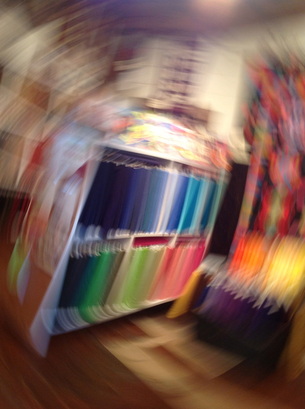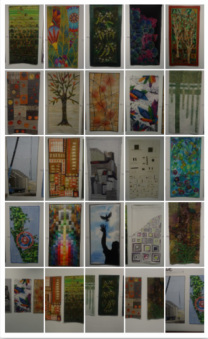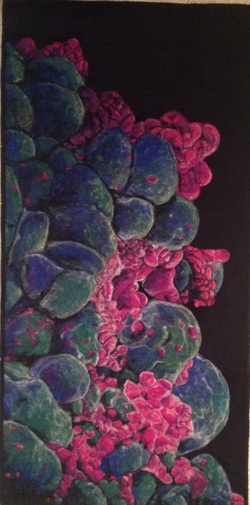Cotton vs. Polyesters

The concepts being addressed in this series of blogs are going to be 'news' only to the novices out there.
These novices are often smart, classy women who have no previous experience sewing. If you are a novice, tune in for the next few weeks for this foundational information.
Let's start at the most basic of basics. Fabric types. For a bed quilt, made by traditional methods you will need a specific fabric type.
Not all fabrics are created equal. How a fabric is made affects the outcome of the finished product. Traditional quilts are most often made with 100% cotton fabrics. Let's consider why.
Cotton is a natural fibre. It has short fibres, grown in warm climates. The short fibres are spun into tiny threads which are then spun together into the size needed for weaving or for sewing. Because the fibres are short several strands need to be twisted together for strength.
Cotton can be ironed at high temperatures. It is a naturally breathable fibre with good absorption properties. Cotton accepts dyes readily and feels soft and supple to the touch.
Polyester is plastic. It is created by petro-chemicals, formed into ribbons, chipped, melted then drawn and spun while hot. The fibre itself does not absorb moisture readily. The fibres are long and strong.
It may melt when cotton level heat is applied. Although it may be strong and useful, and may even be made to look like cotton, it's still going to behave like plastic.
Poly/cotton mixes are strands of cotton and poly spun together. They afford the strength of poly with the feel of cotton. Often quilters will use poly cotton threads to sew pieces together or machine quilt their finished top. These same quilters would not choose poly/cotton fabrics for their creations.
To determine fibre content of old (previously purchased) fabric some quilters use the 'burn' test. After years of handling fabric most quilters can tell by the 'hand' (textile talk for the feel) of the fabric if it contains poly. Plastic feels different. Occasionally a cotton will have starch or sizing in it that will confuse the issue.
What is the burn test? A tiny bit of fabric (half an inch by two inches is PLENTY) is clipped from the corner, then held over a sink or bowl full of water and set alight.
A narrow slip of fabric can be lighted then blown out immediately- if it burns too quickly it is dropped in the water. The (cooled) burnt edge of a cotton fabric will feel soft. Poly feels slightly crunchy or hard. IT'S PLASTIC.
*Please do not try testing method this unless you are a rational, careful, sober adult who can be trusted with fire.
Cotton fabrics will hold a crease. Polyester wants to spring back from creases. Great for clothing, sheets, or furniture, however not-so-much for quilts.
A fabric that holds a crease is useful in quilting. Sewn seams may be ironed flat and tidy. Polyester tends to 'poof' or fluff back up after ironing- if it doesn't melt first!
Rule number one for beginners, use 100% cotton fabrics for your quilting projects.
Next in this series: Not all cotton fabrics are created equal.


 RSS Feed
RSS Feed